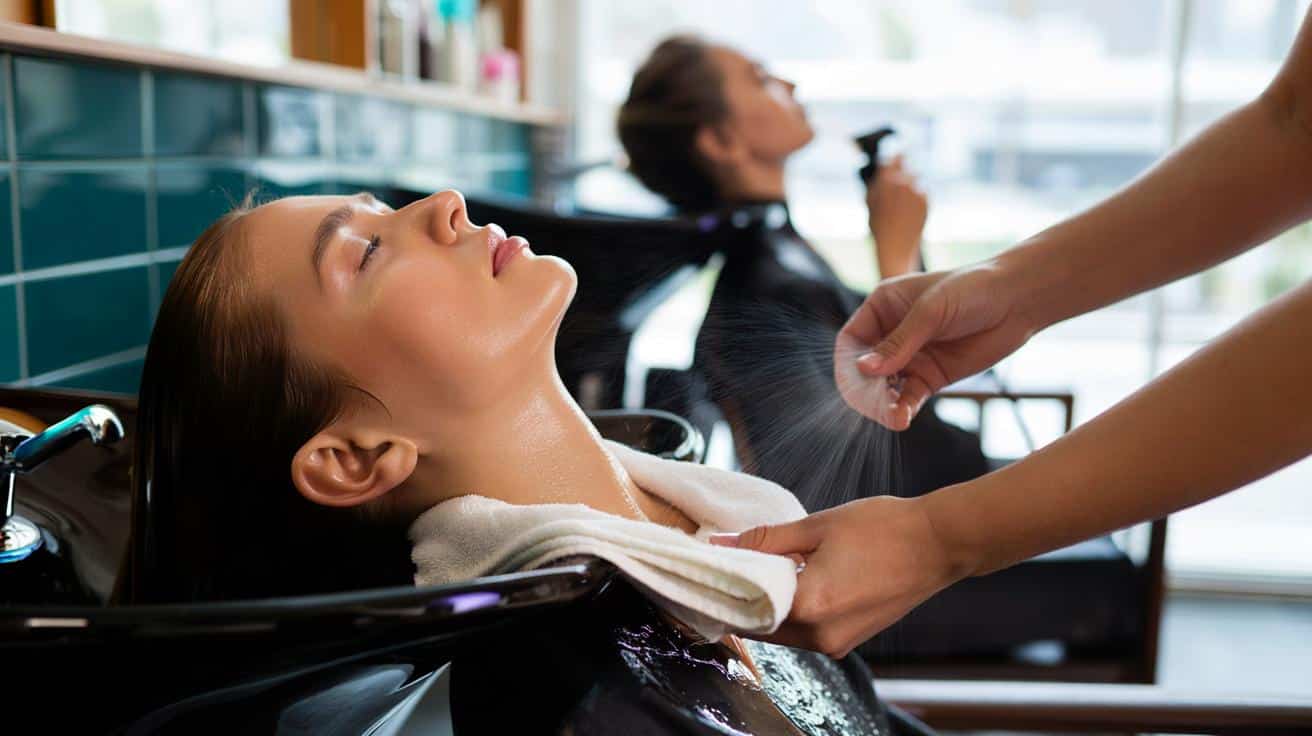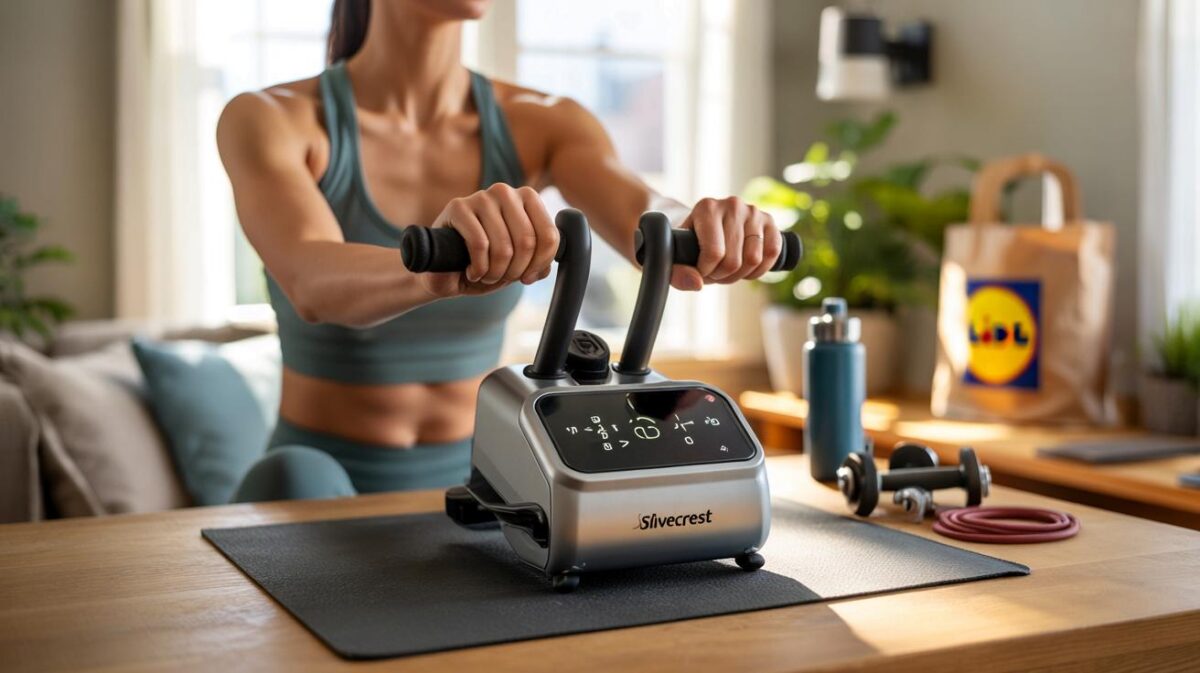A simple salon ritual hides a question few expect.
Across basins in high-street salons, clients lean back as water rushes over their scalps. Most leave relaxed. A small number report dizziness, neck pain or visual disturbance. Doctors have a name for the mechanism that can sit behind a minority of these stories: beauty parlour stroke syndrome. The phrase sounds dramatic, yet the risk sits low. Posture, time at the sink and personal factors decide most of the story.
What is beauty parlour stroke syndrome?
Beauty parlour stroke syndrome refers to stroke or mini-stroke symptoms triggered by prolonged neck hyperextension at a salon basin. The head drops back over the basin edge. The neck arches. The vertebral and, less often, carotid arteries running through the neck can stretch or compress.
This mechanical stress can cause a tiny tear in the artery wall, known as an arterial dissection. Blood can then swirl into the tear and form a clot. If that clot blocks blood flow to brain tissue, oxygen delivery falls. Symptoms depend on which territory loses blood, with the back of the brain particularly exposed when vertebral arteries are involved.
Most shampoo sessions pose no danger. The issue tends to appear when the neck sits in an awkward, extended position for longer than feels comfortable, especially with a hard edge pressing on the nape. A stiff neck, recent strain, or anatomy that makes the arteries more vulnerable can add to the risk.
Keep the neck neutral, supported and pain-free at the basin. If the position hurts or makes you dizzy, stop and change it.
Why a routine shampoo can strain neck arteries
The vertebral arteries travel through small bony channels in the cervical spine before joining at the base of the skull. Hyperextension narrows these channels and kinks the vessels. Rotation can add a twist. Reduced blood flow or a small tear can follow. The carotid arteries, which lie further forward, can also feel pressure if the jaw and neck are forced back hard against a rim.
Risk is not just about angle; duration matters. A short tilt is usually fine. Sitting in the same forced position across multiple washes, treatments and rinses lengthens exposure. The fix is simple: reduce extension, support the neck and keep sessions comfortable.
Warning signs you should act on within minutes
Symptoms can start during the wash, on standing, or hours later. Treat any of the following as urgent:
- Sudden severe dizziness or a spinning sensation after leaning back.
- Double vision, blurred vision or a loss of visual field.
- Slurred speech, word-finding trouble or face drooping on one side.
- Weakness, clumsiness or numbness in an arm or a leg.
- New, unusual neck pain or headache, especially at the base of the skull.
If stroke is suspected, call 999 without delay. Time saved is brain saved.
Symptoms that fade within minutes can still signal a transient ischaemic attack. That needs the same urgent medical response, as early treatment reduces the chance of a larger stroke.
Practical steps at the salon to keep your neck safe
You can enjoy your appointment and protect your neck with small adjustments. Speak up early and ask for changes before discomfort starts.
- Ask for a towel or soft pad on the basin rim to spread pressure over the nape.
- Raise the chair so your head does not drop back sharply. Aim for a gentle tilt, not a deep arch.
- Request a forward-facing wash with a handheld sprayer if extension bothers you.
- Take short breaks between shampoo, conditioner and rinse to reset your posture.
- If you feel dizzy, nauseated or unwell, stop the wash and sit upright.
How different wash positions compare
| Method | Typical neck strain | Practical tip |
|---|---|---|
| Leaning back over a fixed basin rim | Medium to high if the neck over-arches | Raise chair, add padding, keep tilt shallow |
| Forward-facing wash with handheld sprayer | Low to medium | Keep spine upright and shoulders relaxed |
| At-home sink or bath edge wash | Variable; can be high with awkward angles | Use a flexible hose and avoid hard edges |
| Shower wash standing upright | Low | Keep head in a neutral, comfortable position |
Who faces a slightly higher risk
Most healthy adults tolerate brief extension well. A cautious approach helps these groups:
- People with cervical spondylosis, arthritis or chronic neck stiffness.
- Those with known connective tissue disorders such as Ehlers–Danlos or Marfan syndrome.
- Anyone with a recent neck injury or whiplash.
- People with uncontrolled high blood pressure or a history of arterial dissection.
- Older adults with reduced neck mobility.
If you recognise yourself in one of these categories, mention it to your stylist before the wash. Ask for a forward-facing rinse or minimal extension.
What stylists can do without special equipment
Salons can lower risk with quick changes that cost little and improve comfort for everyone.
- Keep a stack of folded towels near each basin to pad the rim.
- Train staff to check neck angle from the side before starting the wash.
- Offer a forward-facing rinse option as standard, not just on request.
- Build short pauses into longer treatments to let clients sit upright.
- Encourage clients to report discomfort immediately, and respond by adjusting position.
Beyond the salon: everyday neck positions to watch
The same mechanics apply in daily life. Long sessions with the head tipped back at awkward angles can aggravate neck structures. Examples include rinsing hair over a bath edge, painting ceilings, or long dental sessions in a reclined chair. The rule remains the same: avoid deep extension for sustained periods, change position often, and support the neck when you can.
A quick 30‑second comfort audit you can try today
Use this simple check before your next wash:
- Sit in the chair and rest your head at the basin without water running.
- Notice any pressure points at the nape; add padding until discomfort vanishes.
- Lift the chair until your chin sits level, not pointing to the ceiling.
- Turn your head left and right; avoid end-range rotation whilst the neck is extended.
- Commit to a pause between wash and rinse to reset posture.
Key terms, made simple
Arterial dissection: a small tear in the inner lining of an artery. Blood enters the wall, forms a pocket and may create a clot. That clot can restrict flow to the brain.
Posterior circulation: the arteries that supply the back of the brain. Symptoms often include vertigo, double vision, imbalance and slurred speech.
What to do if symptoms appear after you get home
If you notice sudden vertigo, one-sided weakness, face droop, speech changes or visual loss later the same day, call 999. Do not drive yourself to hospital. If symptoms are mild and pass, call anyway. Early assessment can prevent a larger event. If symptoms are limited to neck soreness without neurological signs, rest the neck, avoid further extension and seek medical advice promptly if pain escalates or new signs develop.
Why this matters for you
Salon visits should feel pleasant, not risky. The fix rarely needs special gear. Ask for small adjustments, notice early signs and act fast if something feels wrong. These steps help you enjoy the cut, the colour and the chat, without the strain on your neck.








